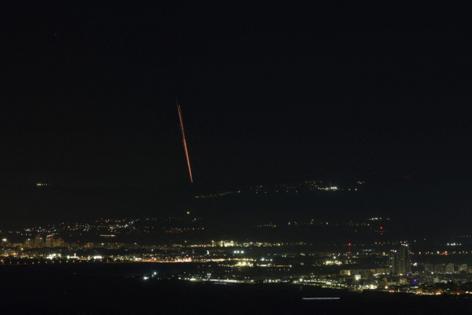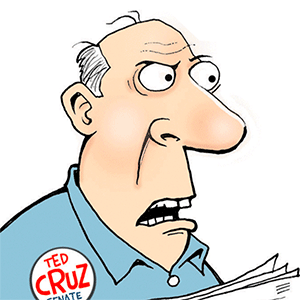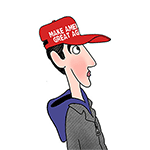Commentary: Trump's missile defense system is nothing but fool's gold
Published in Op Eds
There can be wisdom in cliche. More than 120 years after philosopher George Santayana wrote, “Those who cannot remember the past are condemned to repeat it,” his well-known phrase remains an essential guide for national defense. Case in point: The French failed to draw the proper lessons from the brutal trench warfare of World War I and constructed a better, yet still fixed, static defense in the 1930s — the Maginot Line— that was simply bypassed by the Germans on their way to Paris during World War II.
It can also be a mistake to learn too much from a recent success, applying those lessons to different circumstances. For example, Israel has been remarkably successful at ballistic missile defense with its “ Iron Dome,” built to defend against short- and medium-range missile attacks from its regional enemies. So President Trump has launched his program to expand current U.S. missile defenses and build a “ Golden Dome” — similar in concept, but designed to defend the entire U.S. against long-range missile attacks. And already, with little national debate, Congress is allocating $38 billion this year toward the estimated $175-billion final cost, to be completed by January 2029 — its timing a parting gift from the president (assuming he leaves the White House on schedule).
Is this modern shield a sustainable or wise choice for allocating U.S. defense dollars? It assumes that the Israeli missile defense against threats in its neighborhood can be replicated by the United States — a nation nearly 450 times the size of Israel — against global threats including the world’s big boys, Russia and China. That assumption could produce a massively expensive venture, not “golden” but instead built of fool’s gold, with as little thought for the future strategic environment as the French gave to the Maginot Line.
The vision of an American public protected from nuclear disaster is alluring — and the threats are real. Ballistic missiles are a clear danger to U.S. allies and bases and our homeland. Russia has hundreds of long-range ballistic missiles that can strike the U.S. within minutes; China is enhancing its arsenal of long-range weapons and has a huge arsenal of shorter-range missiles that could hit Taiwan and other U.S. allies and bases in the Asia-Pacific region.
Ominous, yes. But even more important in assessing the Golden Dome is that today’s threats are rapidly evolving, beginning with long-range ballistic missiles. These systems traveling at significantly greater speeds are inherently harder to defend against than the threats facing Israel. Russia, China and others are also investing in advanced missiles designed to evade defenses through their trajectory, maneuverability and the deployment of decoys.
Shorter-range ballistic missiles too are becoming more capable of evasion. When fired in large groups they can penetrate a significant defense, as Iran did at times during June’s 12-day war with Israel.
Nor are ballistic missiles the only strategic threat. Witness Ukraine’s use of cheap, conventionally armed drones to target Russia’s strategic bomber force in a successful surprise attack in May. We should anticipate our adversaries’ investing in cheap swarms of lethal drones and other new technologies to bypass our eye-poppingly expensive Golden Dome, like German tanks bypassing the Maginot Line.
The design of the Golden Dome defense also remains incomplete. It will reportedly include both ground and space-based interceptors as part of a layered defense. But the details are sketchy and still difficult to assess. U.S. defense contractor Lockheed Martin says the Golden Dome is “about connecting a global array of complex systems that need to work at lightning speed and with pinpoint precision at the mission’s moment of truth.”
That sounds impressive, even intimidating. But the rules of physics, and the offense-defense dynamic, have historically worked against strategic missile defense systems. Incoming weapons must be detected; interceptors must be guided to their targets through swarms of decoys; and the defense at the “moment of truth” must achieve a near-perfect score against an increasingly lethal array.
Imagine a relatively “small” attack of 100 nuclear-tipped missiles and a Golden Dome that shoots down 80% of the incoming barrage. Pretty good. But that still leaves 20 nuclear warheads capable of destroying 20 American cities — with swarms of undetected nuclear-tipped drones mopping up — and space-bound nuclear detonations devastating civilian and military communications for years. Could any rational American president rely on such a defense in an actual crisis?
Also, what if an American president, believing the rhetoric surrounding the Golden Dome, calculated that he or she could achieve American dominance through the threat or actual use of nuclear weapons — without fear of a nuclear response? As we became more isolated from allies and others around the world, the Golden Dome could help enclose us in a kind of gilded cage.
Which brings us back to the cost. The Trump administration estimates the Golden Dome’s price tag to reach $175 billion. Yet the Congressional Budget Office believes the space-based interceptors alone could cost more than $500 billion — equivalent to half of the annual defense budget. In a new era of federal spending, which will greatly expand our budget deficits while shrinking programs for our citizens most in need, the cost of the Golden Dome is unconscionable.
Forty years ago, President Reagan proposed an ambitious, highly complex, missile defense system with space-based interceptors. Reagan’s special advisor, Paul Nitze, declared that “Star Wars” (as the media dubbed it) should be deployed only if the defense were effective, survivable and “cost effective at the margins” — or in his words: “They must be cheap enough to add additional defensive capability so that the other side has no incentive to add additional offensive capability to overcome the defense.”
The Nitze criteria prevailed: Two successive U.S. administrations recast America’s missile defenses to focus on short- and medium-range threats, not the immensely more capable threats from Russia and China. Over time, our missile defenses became more affordable, focused and effective — without the expense of space-based interceptors. The savings were applied to other defense and domestic priorities. And America became stronger still.
A good lesson from the past.
____
Steven Andreasen, who served as the National Security Council’s staff director for defense policy and arms control from 1993 to 2001, teaches public policy at the University of Minnesota. Anthony Lake was a national security advisor in the Clinton administration.
©2025 Los Angeles Times. Visit at latimes.com. Distributed by Tribune Content Agency, LLC.
























































Comments